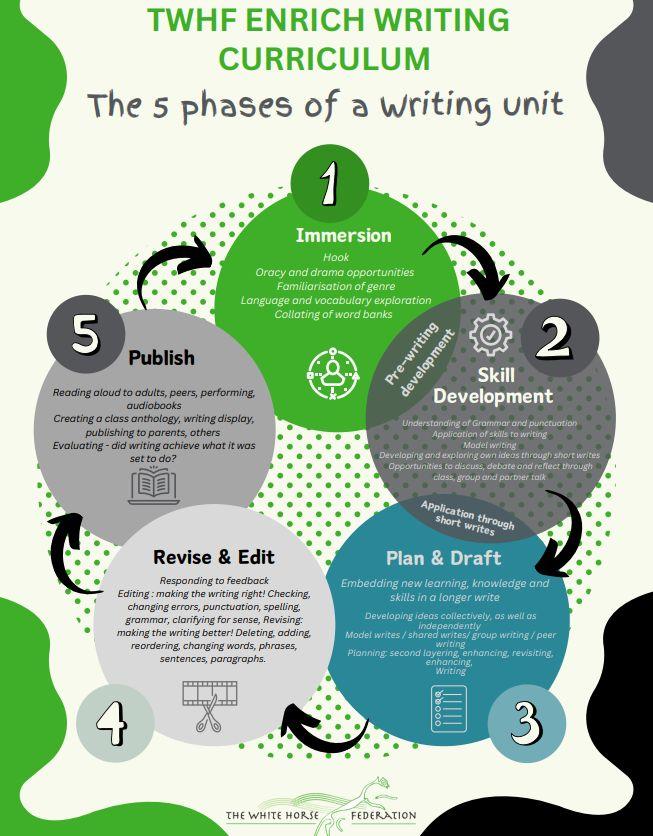

Welcome to our Writing Family Learning Morning

Writing at Southbroom Infants’
Curriculum Intent
Throughout the curriculum we provide rich opportunities for children to be able to communicate and engage in the world. We aim for pupils to be able to articulate their thoughts, feelings and experiences in a clear and articulate way both verbally and in writing.As English supports learning in other subject areas, we aim for pupils to gain experience in reading a wide range of texts: both fiction and non-fiction. We want pupils to apply vocabulary and familiar language structures from high quality texts in their own speaking and writing. We aim for pupils to:
∙ Develop speaking and listening skills in order to share ideas, present information to others and perform
∙ Acquire a broad vocabulary in order to express themselves clearly
∙ Engage with high quality inspirational texts promoting diversity
∙ Write legibly for a range purposes
Writing at Southbroom Infants’
We teach writing through a text-based approach, which allows us to meet the needs of the children that we are teaching – through choosing a text that will engage, inspire and motivate.
Writing is planned through a five phase approach that covers spelling, punctuation, grammar and key skills specific to year groups.




EYFS
Text based approach
- Phonics – Letter formation
- Literacy Lessons – Shared writes modelling expected writing standards through ‘Talk for Writing’.
- Opportunities for writing in provision
- clipboards
- post it notes
- notebooks and diaries
- grow the code – in different areas
- vocabulary
- name cards
End of Reception - Writing
• Write recognisable letters, most of which are correctly formed.
• Spell words by identifying sounds in them and representing the sounds with a letter or letters.
• Write simple phrases and sentences that can be read by others.
Spelling
• In KS1 children follow the Little Wandle SSPscheme and begin to read and spell high frequency words.
• Learning to recognise the high frequency words on sight is crucial in developing fluency and accuracy in reading and then writing.
• High frequency words are the words that appear most often in printed materials. Some of the high frequency words are referred to as ‘tricky words’ as the children are unable to use their phonic knowledge to decode every part of the word.
• Once children have completed the SPPthey begin the Little Wandle ‘Bridge to Spelling Scheme’.These lessons follow the recap, teach, practice, apply approach. Spelling patterns are also incorporated into the three phase writing approach.
• Spellings at home
- weekly sent out by class teacher based on phonics/spelling lessons.
Handwriting
• In the early years children are given many opportunities to develop their mark making skills.
• Children are taught letter formation in line with the Little Wandle phonics scheme.
• Handwriting is taught on a regular basis working towards mastering handwriting that is fluent, legible and, eventually, speedy.
• Children will learn exits and begin to join letters in year 2 when they are secure in their letter formation.

“If you want to change the world pick up a pen and write.”
Martin Luther King
Let’s see it in practice!
-Time to visit your child’s class and watch/join in with a writing lesson.
-We will come back together at 10am to discuss what you saw and answer any questions.
Thank you for joining us this morning.
